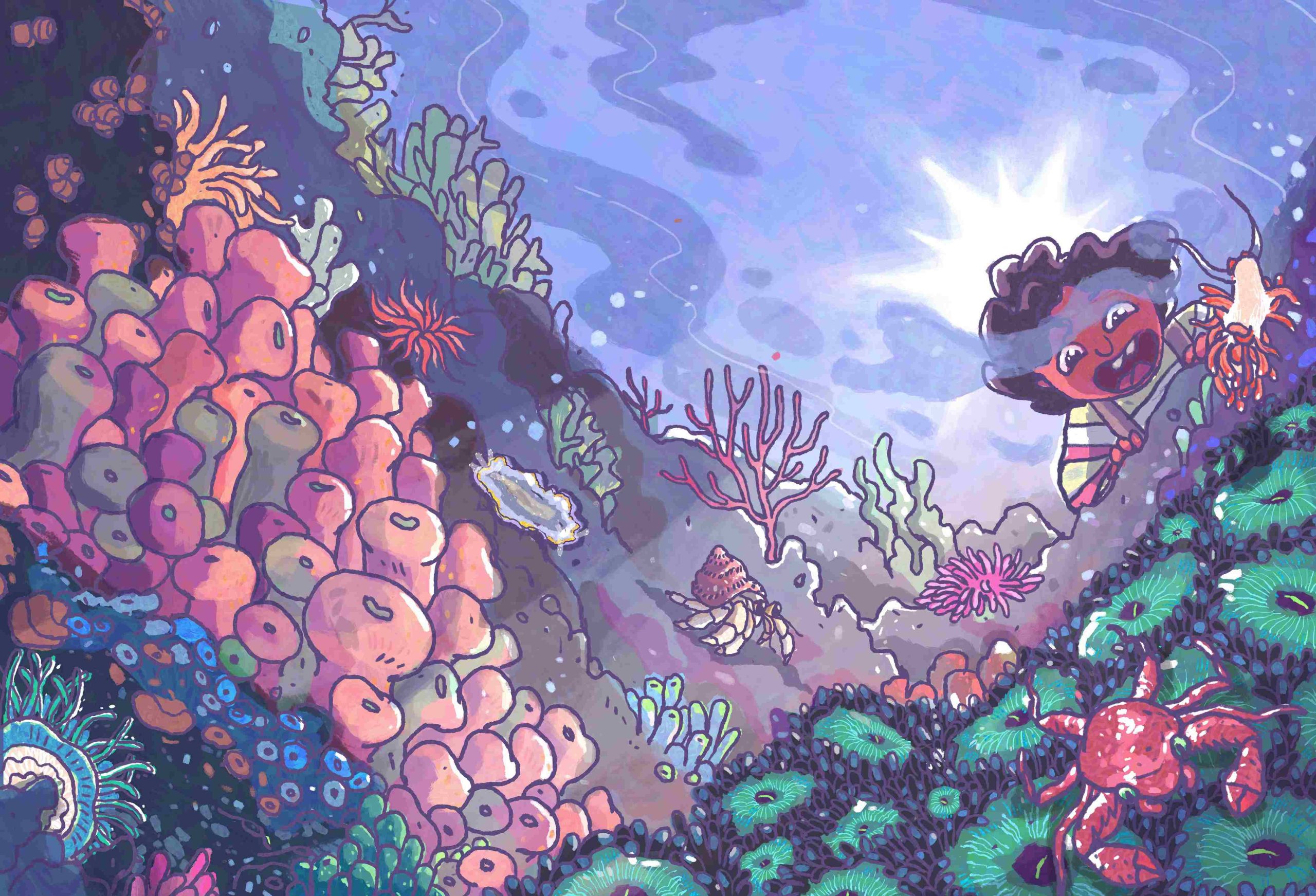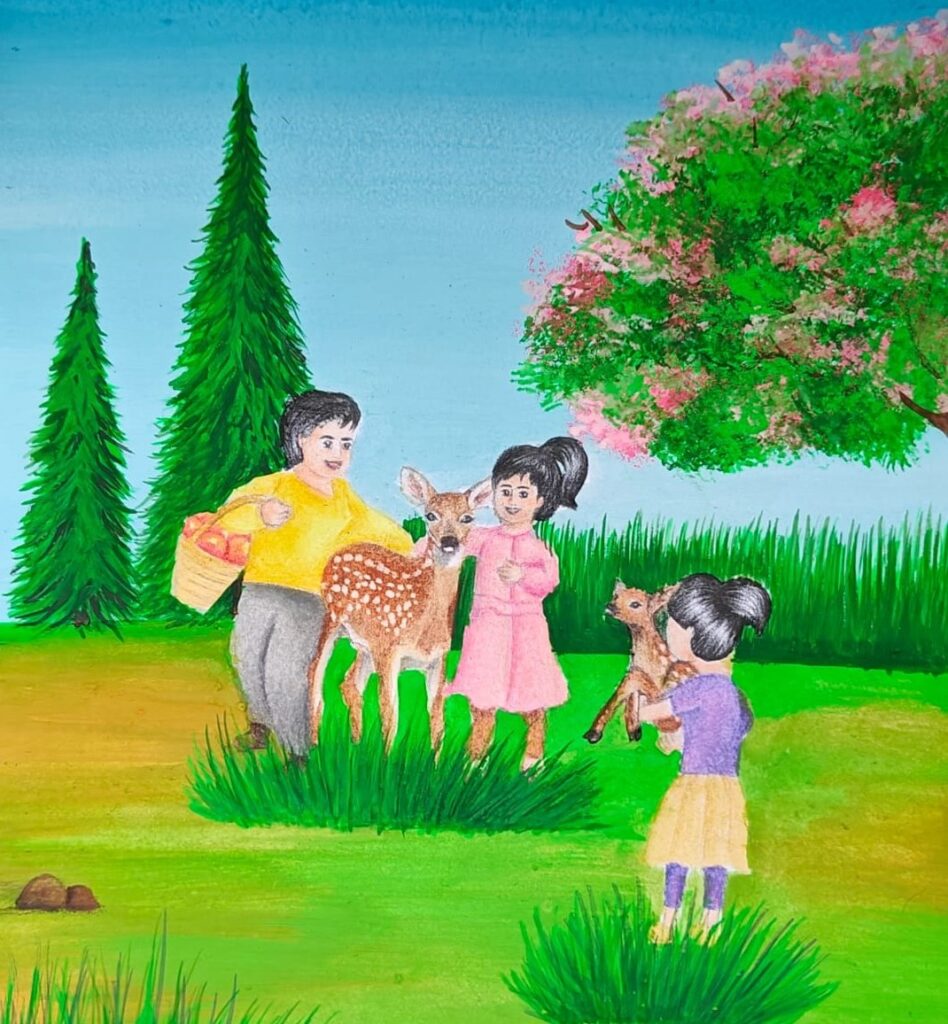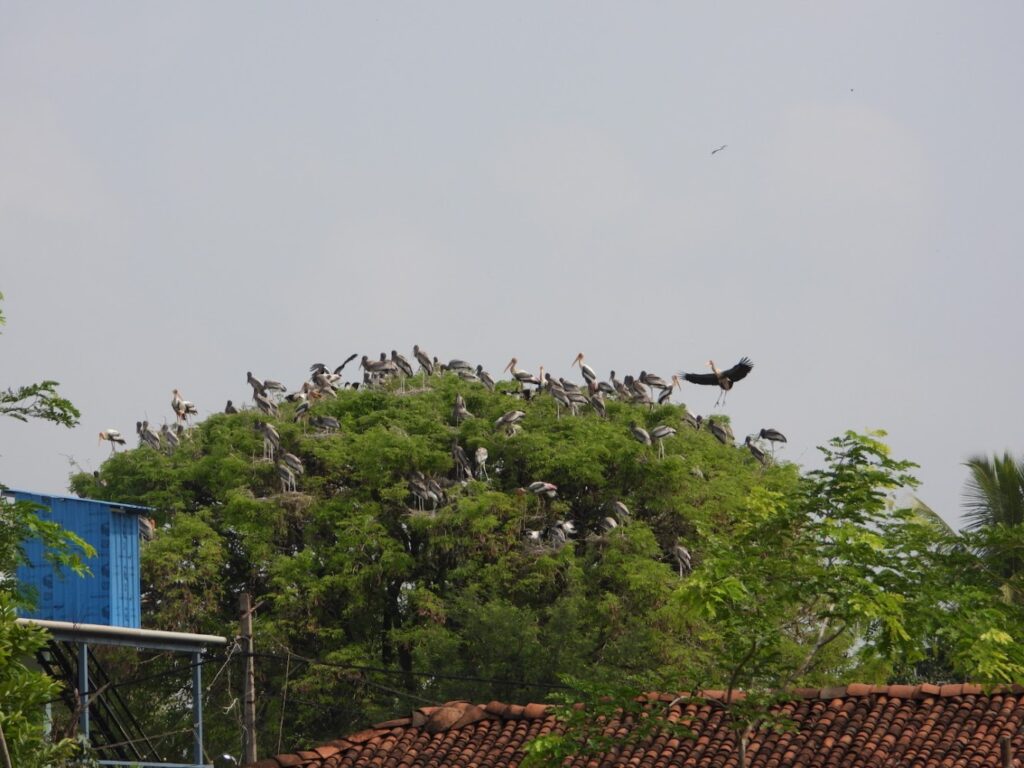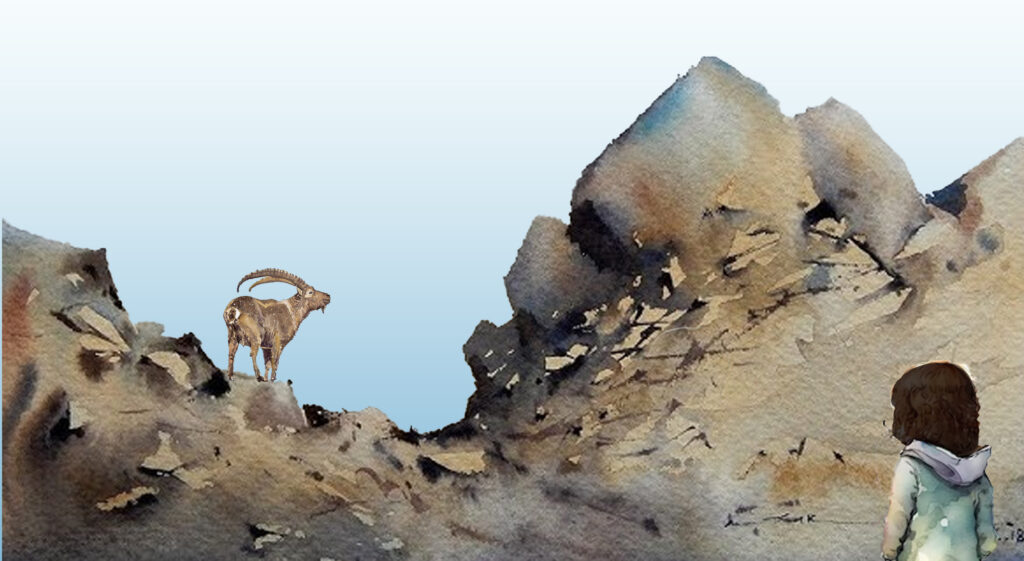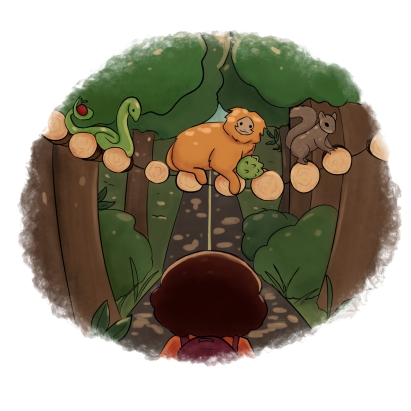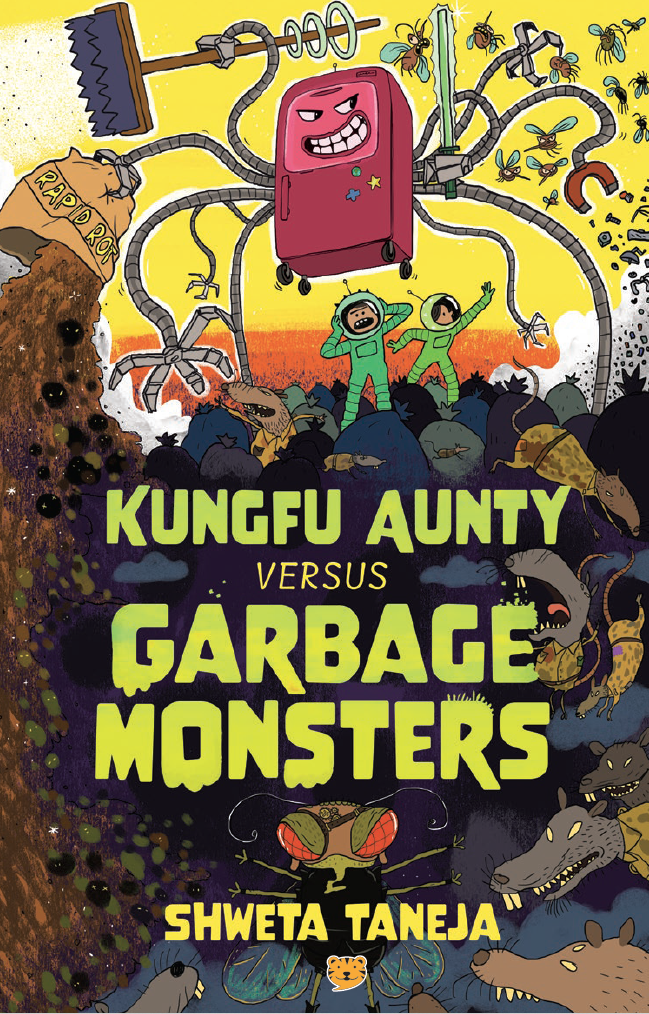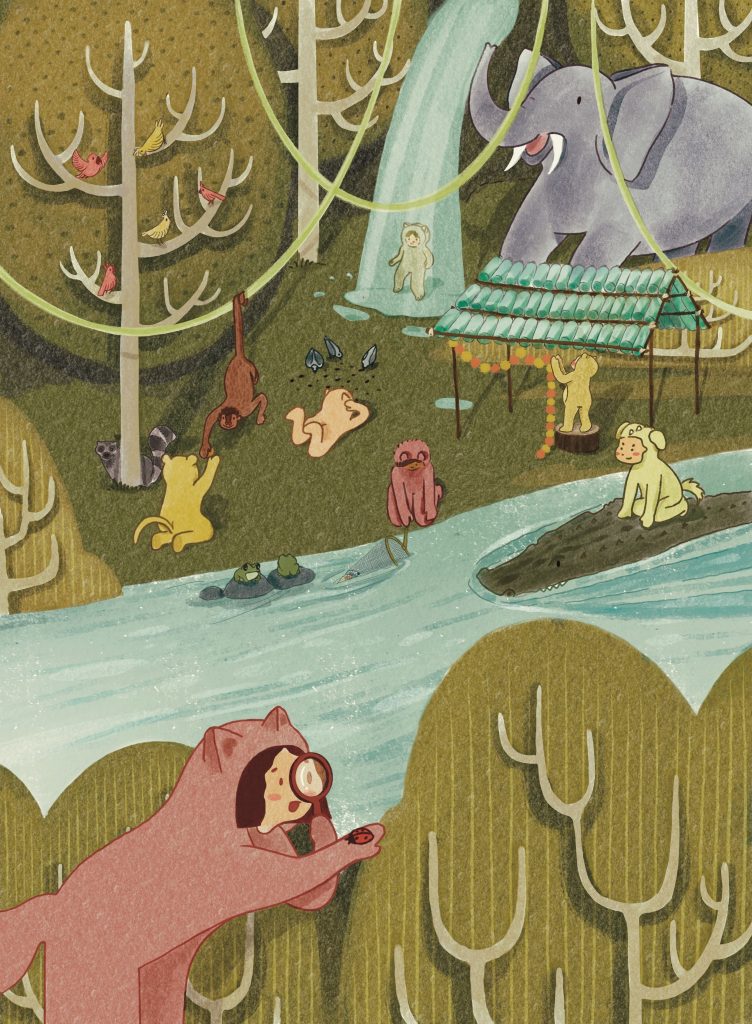Armed with a flimsy macro lens and waterproof trainers, Nara was ready to take on the tide pools of Mumbai. While most kids enjoy a break from waking up early in the morning during the summer holidays, Nara delighted at the thought of trekking towards the shoreline and venturing on a search for marine creatures as dawn enveloped the city.
In Mumbai, people gather along the sea face from Marine Lines all the way to Bandstand Promenade to enjoy the sea breeze and watch the waves crash against the city. But, as the tide recedes, this stretch of coastline unveils patches of rocks that are home to numerous marine creatures.
Mornings spent tide-pooling along the coast of Mumbai had introduced Nara to a myriad of creatures—corals, sea anemones, crabs and barnacles, to name a few—but today she was on a mission to find the most intriguing of all: the sea slug.
Rocky coastlines give rise to unique microhabitats, such as tide pools. Tide pools are formed as seawater gets trapped between the rocks, once the tide recedes. Contrary to popular belief, these pools brim with life, inhabited by curious creatures that have adapted to live in a continuously changing environment.
Sea slugs are marine invertebrates, related to snails, that have lost their external shell. These soft-bodied creatures are found globally, but are most abundant in shallow tropical waters. Some are dull-coloured which allows them to easily blend with their surroundings, while others are brightly coloured and boast mesmerising patterns. These vivid hues are not just for show, they serve as a warning message to predators: “We are toxic. Do not consume us!”
Sea slugs are marine invertebrates, related to snails, that have lost their external shell. These soft-bodied creatures are found globally, but are most abundant in shallow tropical waters. Some are dull-coloured which allows them to easily blend with their surroundings, while others are brightly coloured and boast mesmerising patterns. These vivid hues are not just for show, they serve as a warning message to predators: “We are toxic. Do not consume us!”
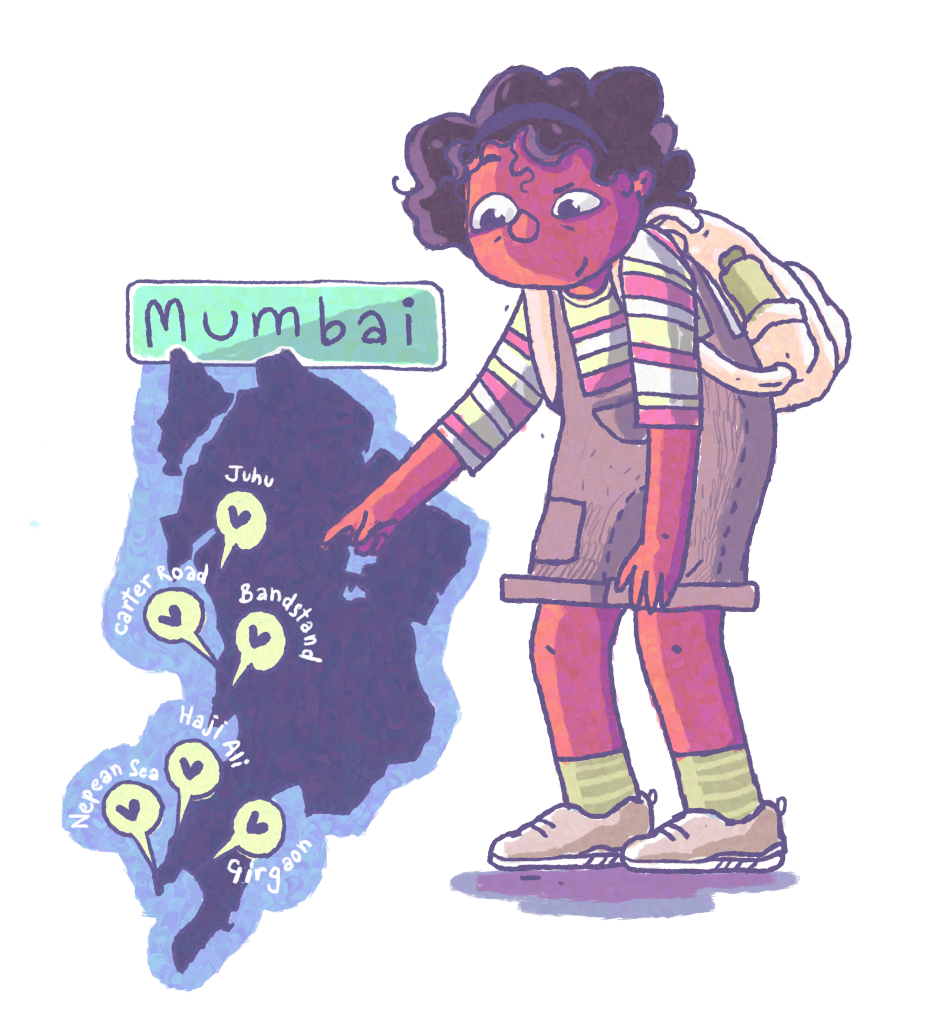
Skipping from one rock pool to another, Nara observed hermit crabs scrambling across the surface. Zoanthids—a type of soft coral—clumped together, forming irregularly shaped carpets on the rocks. Peering into tide pools, she occasionally spotted a sea anemone, its tentacles resembling the petals of a flower. As she skipped and hopped and quite regularly slipped in a hurry to reach the next pool, her trainers protected her feet from both the rocky surface and the sharp protective shells of barnacles. Nara knew that she would have to spend a long time scanning each tide pool in search of any movement that indicated a sea slug’s presence. Given its small size and ability to conceal itself, finding a sea slug was nearly impossible.
Her first spotting came in the form of a tiny leaf-like slug: Elysia hirasei. A closer look at a patch of rock covered with marine algae revealed a large group of Elysia chomping through the algae. They obtain their green colour from feeding on the algae, which helps them camouflage effortlessly with their feeding grounds. The mildest of water currents would cause their frills to gently ripple. To Nara, they looked like cattle grazing across a lush green field while she, a giant, peered at them from above. Although to any passerby, Nara too would look weird, laying on her belly atop a rock, gazing into a shallow stretch of water.
After spending a long while watching the sea slugs go on with their business, Nara dusted herself off and continued on her search for more sea slugs. Time flew by as she scuttled from one pool to another. Nara knew that she would soon have to give up her search and return home. But her determination to find more sea slugs drove her across the expanse of the rocky shoreline.
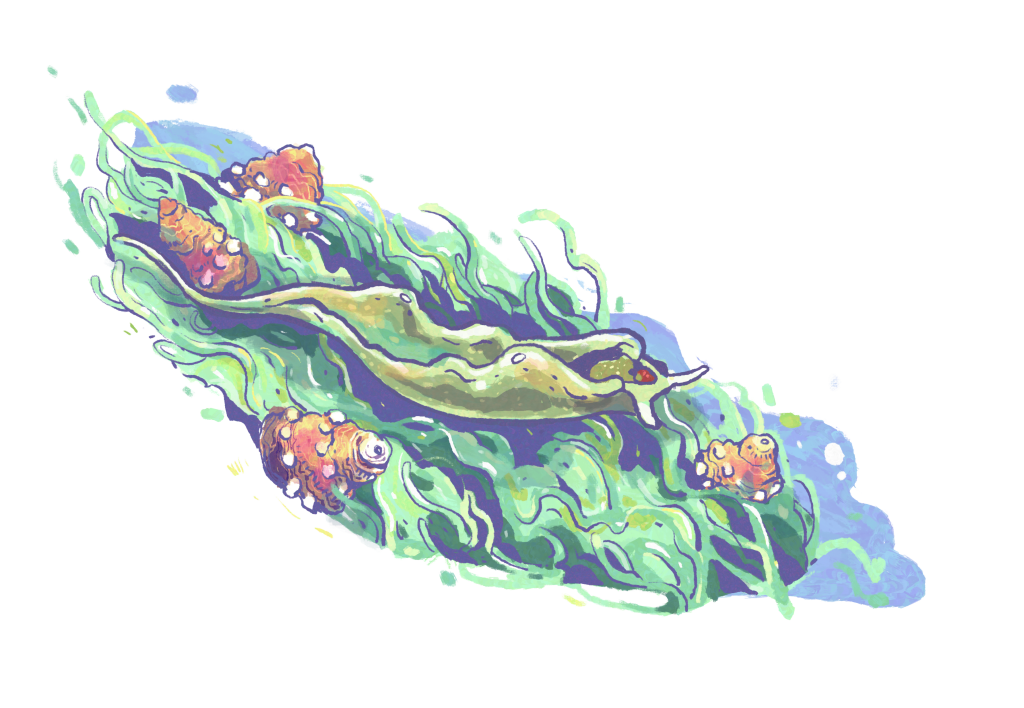
And then, she spotted something that stole her breath away: nestled between a sea sponge and a rock lay the splendid Goniobranchus bombayanus. The Bombay sea slug gets its name from the city. First described in 1949, it remained hidden from the residents of its namesake for decades due to the relative lack of interest in sea slugs among people. Only recently has the slug come back into the spotlight. What started as a motley group of naturalists exploring Mumbai’s coastal flora and fauna, slowly budded into gatherings of nature enthusiasts and city dwellers seeking a break from their daily mundane routine. The subsequent excitement surrounding these largely unknown marine animals brought the city’s shoreline to the forefront, and along with it the ‘rediscovery’ of the Bombay sea slug, its vivid colours and name catching the attention of everyone.
The bright yellow border and dots of rich purple scattered across its milky-white body instantly caught Nara’s attention and wonder. Approximately the size of a paper clip, the mostly flat slug remained stationary in its little nook. Two rod-like structures rose from its head while the other end held a cluster of feather-like structures arranged like the petals of a flower that glistened in the sunlight. She recalled a guided shore walk that she had attended, during which the accompanying marine biologist informed her that these structures allowed the animal to breathe and sense its surroundings. At present, she watched the sea slug with delight in her heart. Her hard work and determination had paid off in the most wonderful way. Coming across a Bombay sea slug in the city’s tide pools was a rare occurrence, so Nara couldn’t believe her luck with sighting one.
As the sun began beating down its harsh rays, Nara gathered her things and began her walk back home. A part of her understood that the city’s shoreline would drastically change over time due to construction projects that were slowly reclaiming land from the sea, climate change and rising sea levels. Her grandfather had once shown her black-and-white pictures of Mumbai’s shoreline, but it looked nothing like the seafront today. For now, she couldn’t wait to share her exciting sea slug adventure with anyone who would care to listen and show them the countless blurry pictures she had taken of these fascinating creatures.
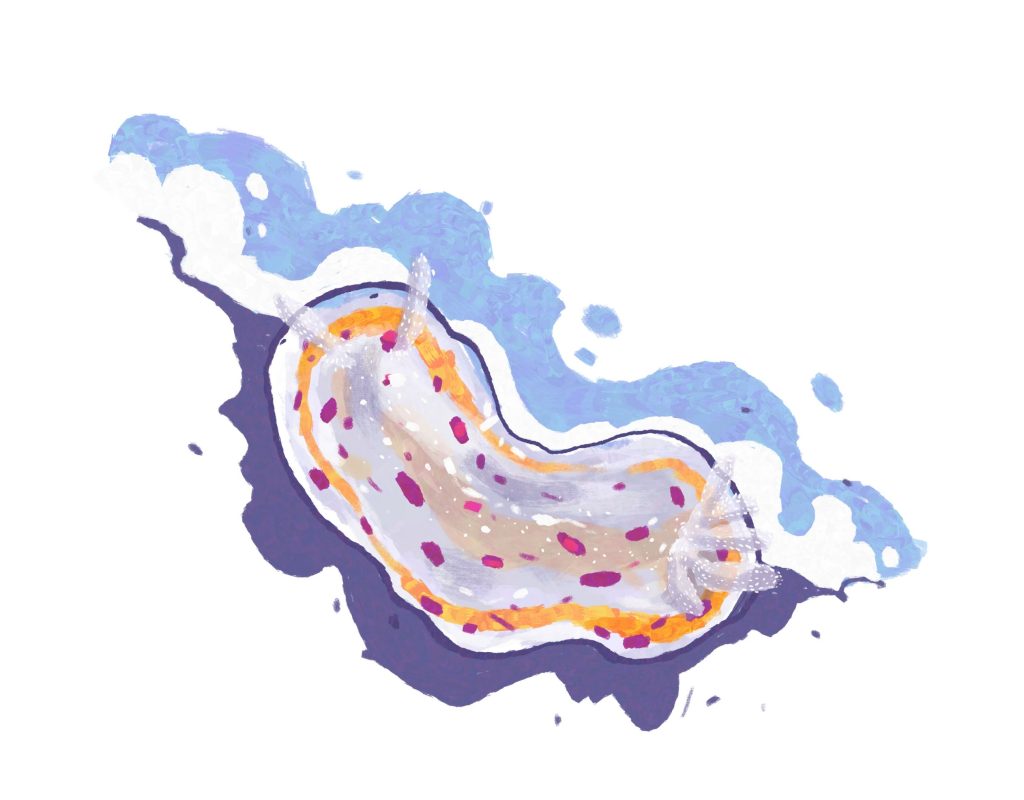
For more information on Mumbai’s marine life, visit www.inaturalist.org/projects/marine-life-of-mumbai. If you’re in Mumbai, you can join a guided shore walk with Marine Life of Mumbai (MLOM). See www.coastalconservation.in/marine-life-of-mumbai or follow @marinelifeofmumbai on Instagram for updates.
